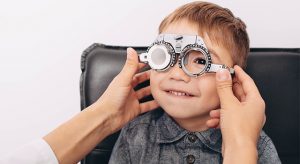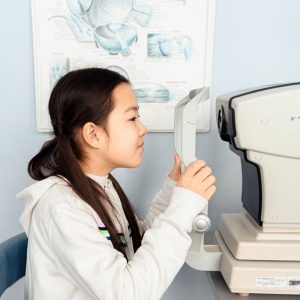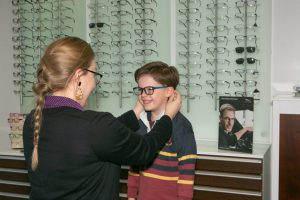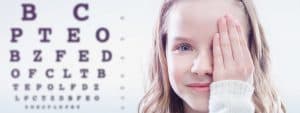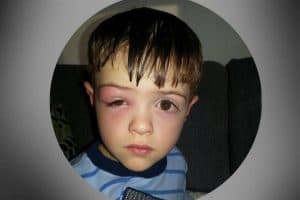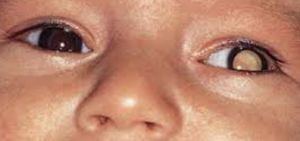Home > Children's Vision > Guide to Pediatric Eye Conditions
Guide to Pediatric Eye Conditions
-
Retinoblastoma: How Did an Eye Exam Save a Child’s Life?
This inspirational story highlights the importance of regular eye exams for the early detection of retinoblastoma. What is Retinoblastoma? In the United States, up to... -
Does Myopia Increase My Child’s Risk of Glaucoma?
Myopia not only impacts your vision, but also increases your chances of sight-threatening eye conditions. Myopia, also called nearsightedness, is a vision condition that causes... -
How Will Retinopathy of Prematurity Affect My Child’s Vision?
Each year, over 14,000 cases of ROP are diagnosed in the U.S. alone, affecting 3.5% of premature infants. While premature birth is the number one... -
Retinopathy of Prematurity: FAQs
Almost 1 in 10 of all babies are born premature, increasing their risk of a serious eye disease called Retinopathy of Prematurity (ROP) . A... -
My Child has Hyperopia: Top 8 FAQs
Is your child reading below grade level or have attention difficulties? Your child may have hyperopia. Hyperopia is another term used to describe long or... -
Choroideremia and Vision Loss
Choroideremia is a rare genetic condition, causing severe vision loss beginning in childhood. Choroideremia affects approximately 1 in 50,000 to 1 in 100,000 people, impacting... -
Understanding Latent Hyperopia
Approximately 25% of the population is affected by hyperopia, but how does this affect reading? What is hyperopia? Hyperopia (farsightedness), occurs when the eyeball is... -
7 Common Pediatric Eye Conditions
Almost 20% of American children under 18 have a diagnosed eye or vision condition. Diagnosing eye problems in childhood can help minimize potential damage and makes treatment faster and more effective. That’s why parents should know about the most common pediatric eye problems and their symptoms.... -
What Is Myopia?
Myopia affects clarity of vision for any distant images and objects - the board in a classroom, driving, the television, a clock on the wall, etc. Myopia affects millions of children and adults, worldwide, over 30% of the U.S. population suffers from myopia.... -
What Is Farsightedness?
It is estimated that 13% of school age children are far-sighted, farsightedness, also known as long-sightedness or hyperopia, causes near objects or images to appear blurry. Hyperopia causes the eye to focus what you are looking at behind the retina, instead of on the retina- causing words on a page, or images on your phone to appear out of focus.... -
Why Is Myopia Management Important?
Is there a way to prevent my child’s myopia from worsening? A number of recent studies suggest that it may be possible to control myopia by totally stopping, or at least slowing down, its progression during childhood and teenage years. Myopia management is a treatment program aimed at controlling myopia, keeping the level of myopia as low as possible, in order to reduce your child’s risk of developing vision threatening eye diseases later in life.... -
What Is Astigmatism?
Astigmatism is one of the most misunderstood optical terms...maybe because it is so hard to say?! Astigmatism is a refractive error that causes distorted vision, usually at all distances. It is a common vision condition that can be present at birth, or develop over time, and most frequently occurs together with myopia (nearsightedness) or hyperopia (farsightedness).... -
A Guide to Children’s Eye Diseases
As your child grows older, annual exams are crucial to ensure that their eyes continue to develop normally, and to detect any changes in vision or ocular health. Importantly: vision screenings conducted by schools are not a substitute for a comprehensive eye exam - ocular diseases and many vision problems cannot be identified through a screening.... -
A Guide to Eye Infections
Up to 1 in 8 of all children will have an eye infection each year. Parents should be aware of the symptoms of an eye infection to enable prompt identification and treatment. Eye infections can be serious and may cause permanent vision loss. Effective treatment is always needed, especially when bacteria, viruses, or fungi invade the eye or the surrounding areas. The most common eye infections that affect children are called Viral and Bacterial Conjunctivitis— both highly contagious....


